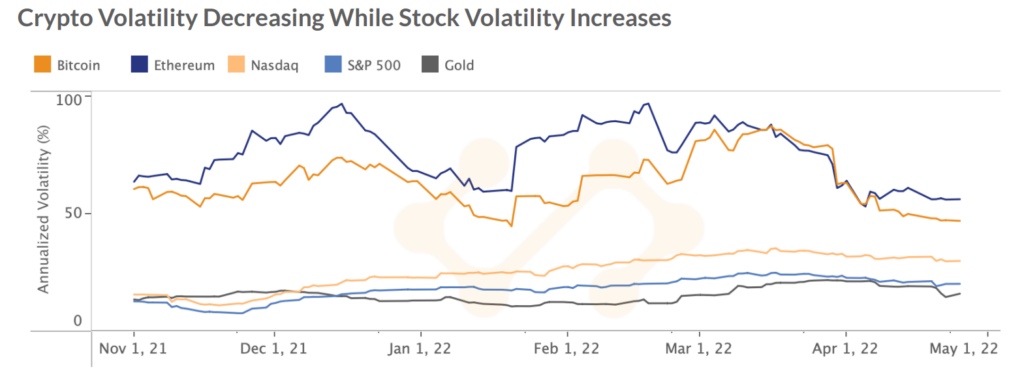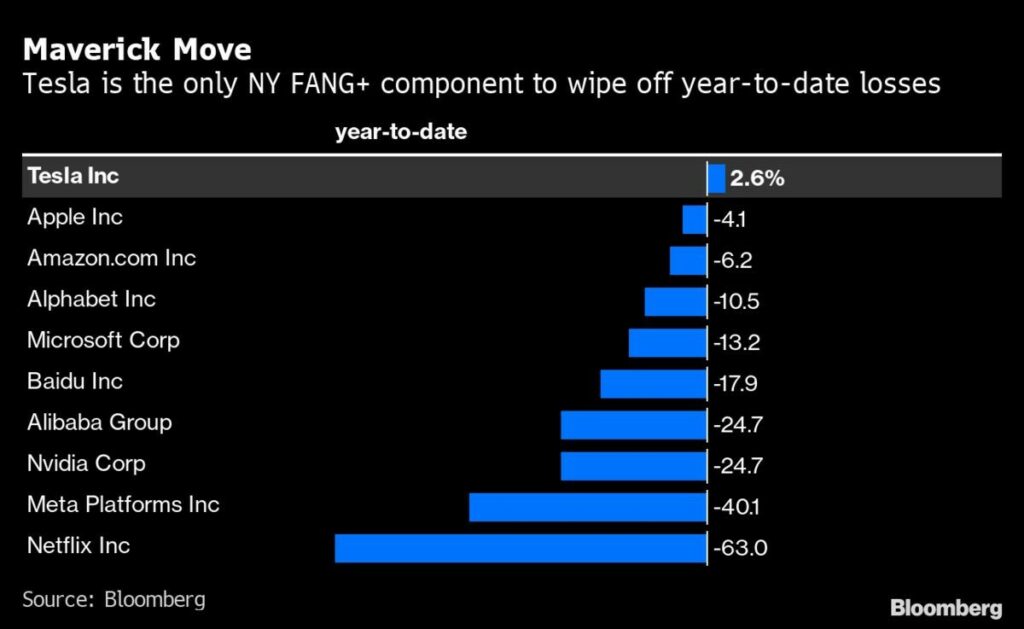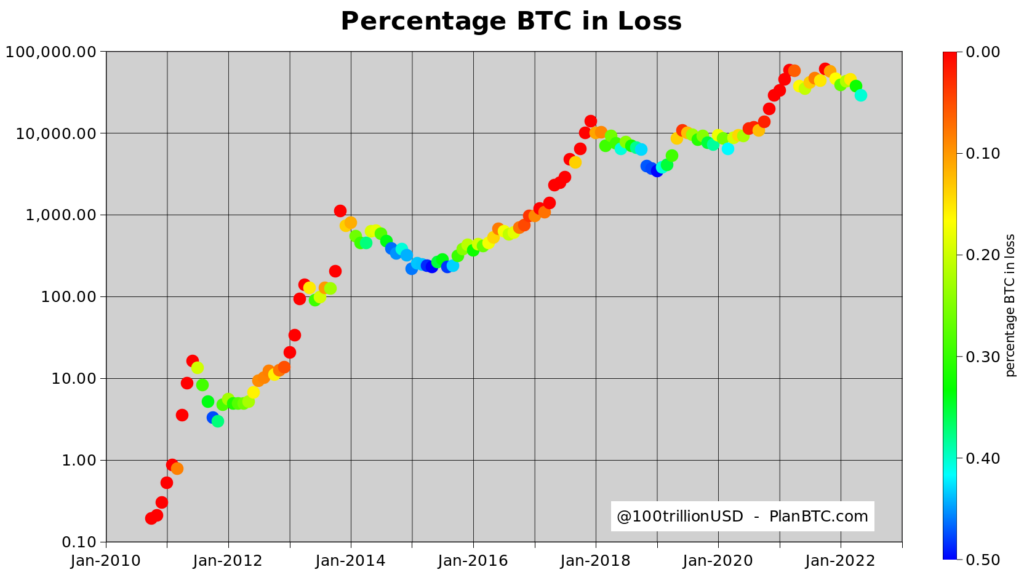Equity markets are becoming more volatile as the cost of capital increases.
The correlation between equity and crypto markets has been steadily increasing over the last few months and is now at a record high. Data suggests that volatility in the crypto markets has been decreasing while at the same time, stock market volatility is on the rise.
Both Bitcoin (BTC) and Ethereum (ETH) have been holding within a tight range despite the massive Terra ecosystem collapse, which went from $25b to under $1b market cap within a week.
On the other hand, the top stock indices, S&P 500 and NASDAQ, have grown more volatile.

Source: Kaiko.com
This is significant because the S&P 500 has a vastly larger market cap than crypto, at $38.29 trillion vs. $1.26 trillion, respectively. In other words, for an asset class of that size to show signs of increased volatility, it means that massive monetary forces are exerting negative pressure, and one of them seems to be the Federal Reserve’s hawkish stance.
Why are Blue-Chip Stocks Showing Weakness?
Blue-chip stocks have also shown a sharp downturn recently. Among the elite of this cream are FAANG stocks, consisting of former Facebook, Meta Platforms (NASDAQ:FB), Apple (NASDAQ:AAPL), Amazon (NASDAQ:AMZN), Netflix (NASDAQ:NFLX), and Alphabet (NASDAQ:GOOGL).
The only survivor that remained positive is Tesla (NASDAQ:TSLA), largely due to the increased prices for its luxury EVs.

This downturn coincides with the Fed’s monetary reversal, going from quantitative easing (QE) to quantitative tightening (QT). The hints of this tightening began in late 2021 with a planned interest rate hike of 0.75%. There are multiple reasons why this is important:
- The central bank, the Federal Reserve, has been using QE to buy up government debt, commonly bonds and securities. Specifically, mortgage-backed securities and other asset-backed securities that could be toxic. Doing so removes the default risk for banks.
- Such buying pressure raises the price of these assets, just like buying pressure would raise the price of Bitcoin. In turn, the interest rate on bonds decreases.
- By buying these assets, the Fed supplies both commercial banks and the government with cash. This is the M2 money supply increase, which has skyrocketed in the last two years. M2 represents the total volume of publicly available money.

Source: fred.stlouisfed.org
Therefore, with so much cash in hand, the space has opened up for both banks and the government to spend and lend money, with the goal to increase economic growth.
This is the primary purpose of QE, first launched in November 2008 as a response to the subprime mortgage crisis depicted in The Big Short movie.
However, cheap credit from QE has been commonly used to prop up the equity market as well. Moreover, the economy has been flooded with so much cash that it is now “overheated,” manifesting in peak inflation. The reversal of QE, as QT, is now the Fed’s gambit to “cool down” the economy by bringing inflation down to 2%, its previous target.
In short, the money supply increase through QE scrambled market signals. The Fed is removing cheap credit pillars from the equity market, making it more volatile.
For the majority of 2021, investors were engaging the market with near zero-interest rates in mind (0 – 25). Now, this sentiment has shifted to the gray zone (125 – 150).

Source: CMEGroup.com
As QT unfolds, investors reshuffle their portfolios with greater cost of capital in mind. 100 basis points is 1% federal funds rate.
What Does QT Mean for the Crypto Market?
Circling back to decreased crypto volatility and increased stock volatility, what can one expect given this new macroeconomic context?
During the cheap credit era, many investors have taken a dip into the crypto market pool. This is why we have seen a record high correlation between equities and top cryptocurrencies, Bitcoin and Ethereum.
Specifically, between the tech-heavy index NASDAQ 100 and Bitcoin. This indicates that many institutional investors perceived Bitcoin as a tech-growth asset, not a hedge against inflation as it was originally designed to be. Therefore, the current Bitcoin sell-off indicates a reset of this sentiment, causing decreased volatility in return.
Of course, the Luna Foundation Guard (in charge of the now-defunct Terra ecosystem) has been selling off all of its 80k Bitcoin to prop up the failed UST stablecoin.
This was another major external pressure point that triggered panic-selling.

In the aftermath of the Fed and Terra’s negative pressures, what is the crypto market left with? Firstly, Terra’s spectacular collapse is pointing out to the public at large that not all cryptocurrencies are created equal. This bolsters Bitcoin’s hand as the most decentralized, oldest, and time-tested coin.
Secondly, about 60% of BTC holders are still in profit. More precisely, 93% of May’s panic-sellers entered the market between January and April.

Source: PlanBTC.com
As crypto cycles go, this is another one in which weak hands (short-term holders) carried the torch to strong hands (long-term holders). In other words, there are more Bitcoin holders now that perceive it to be a marathon investment, not a sprint. Hence, why the crypto volatility has been decreasing relative to the stock market.
